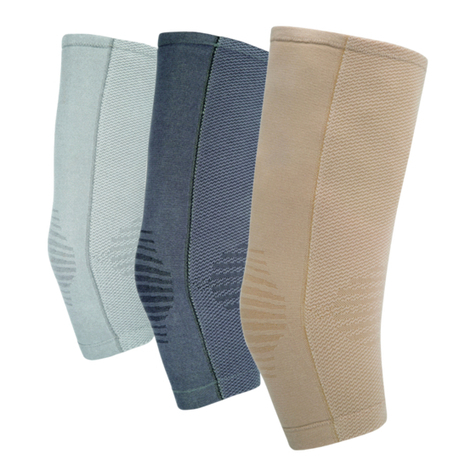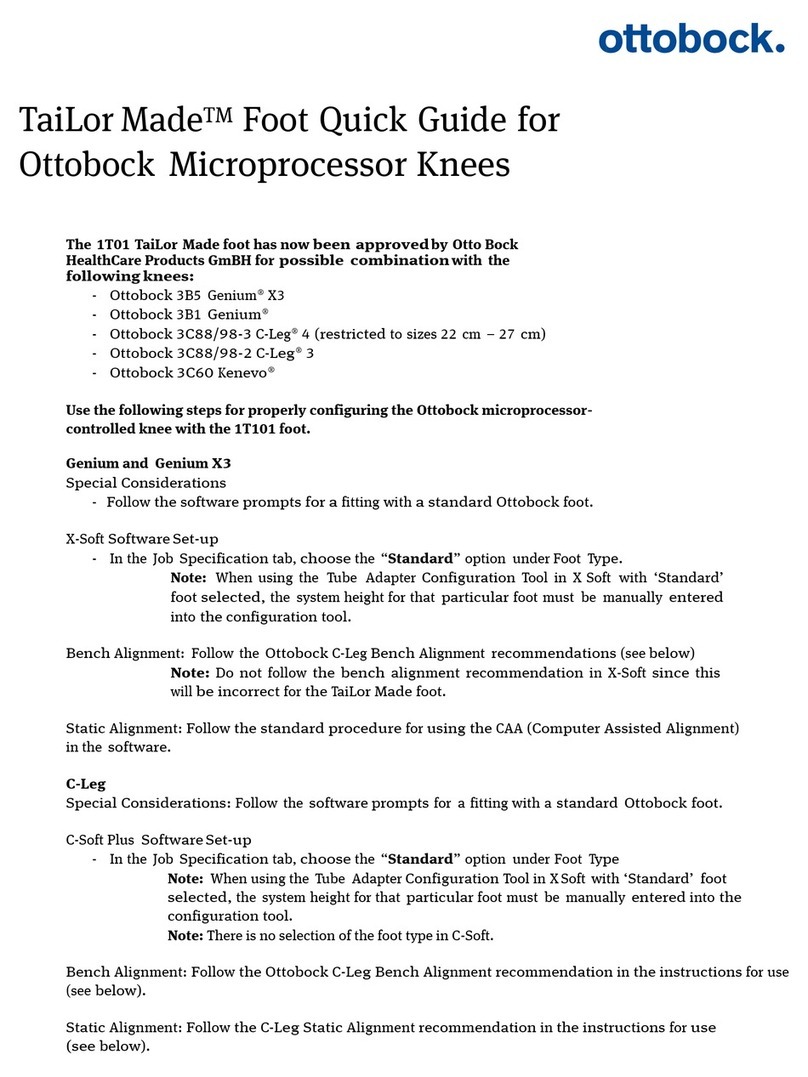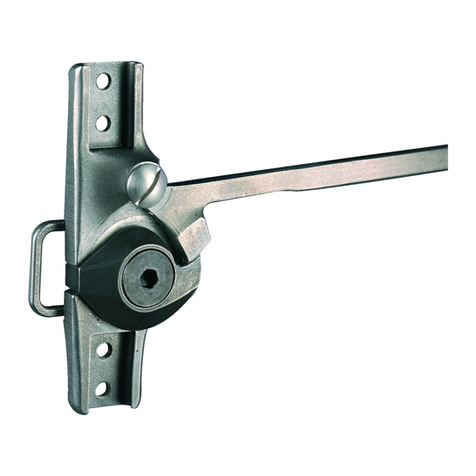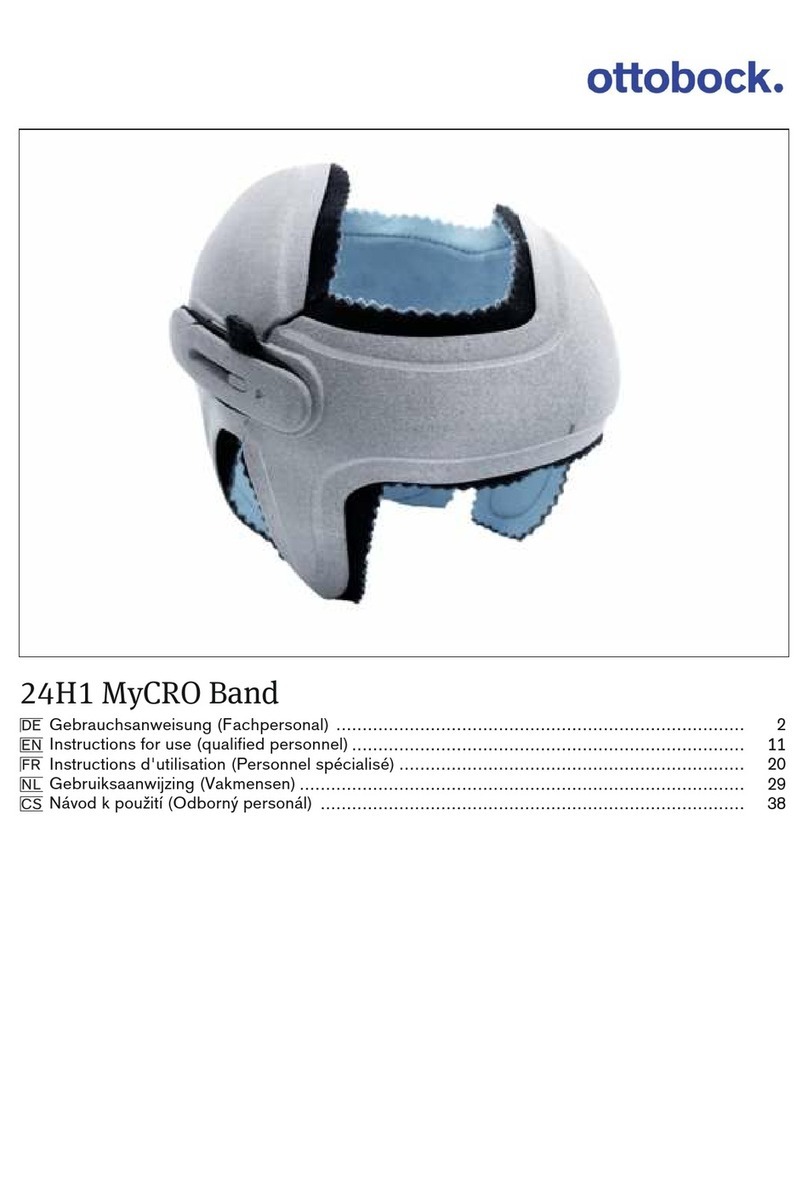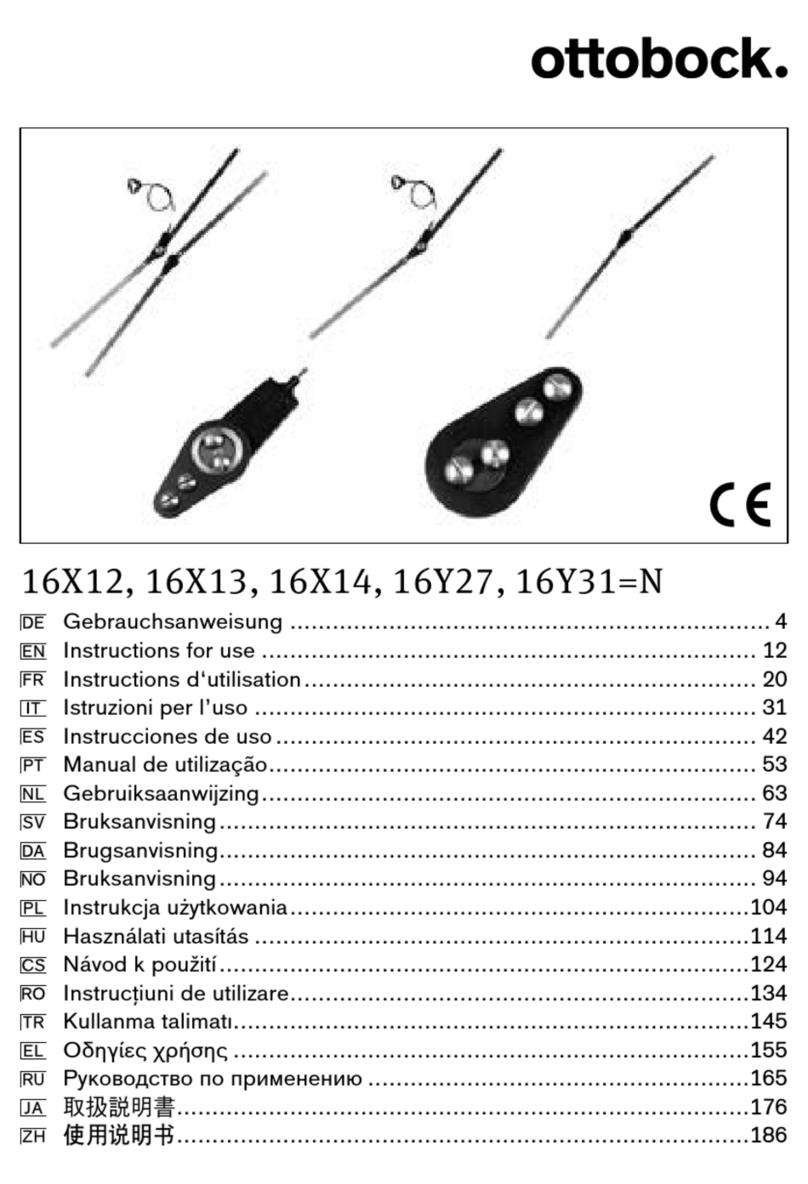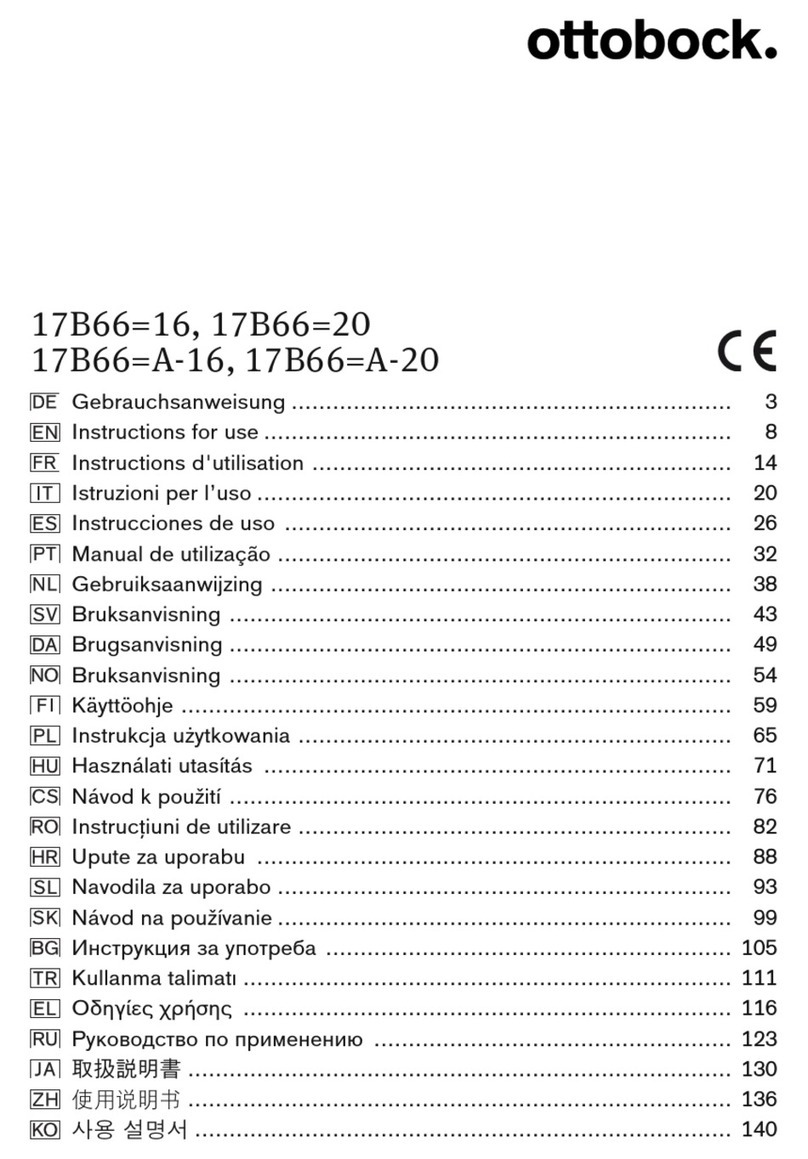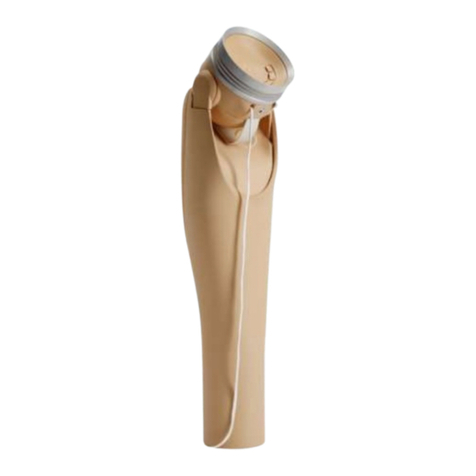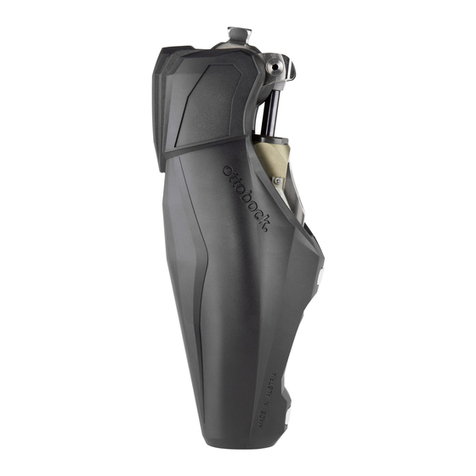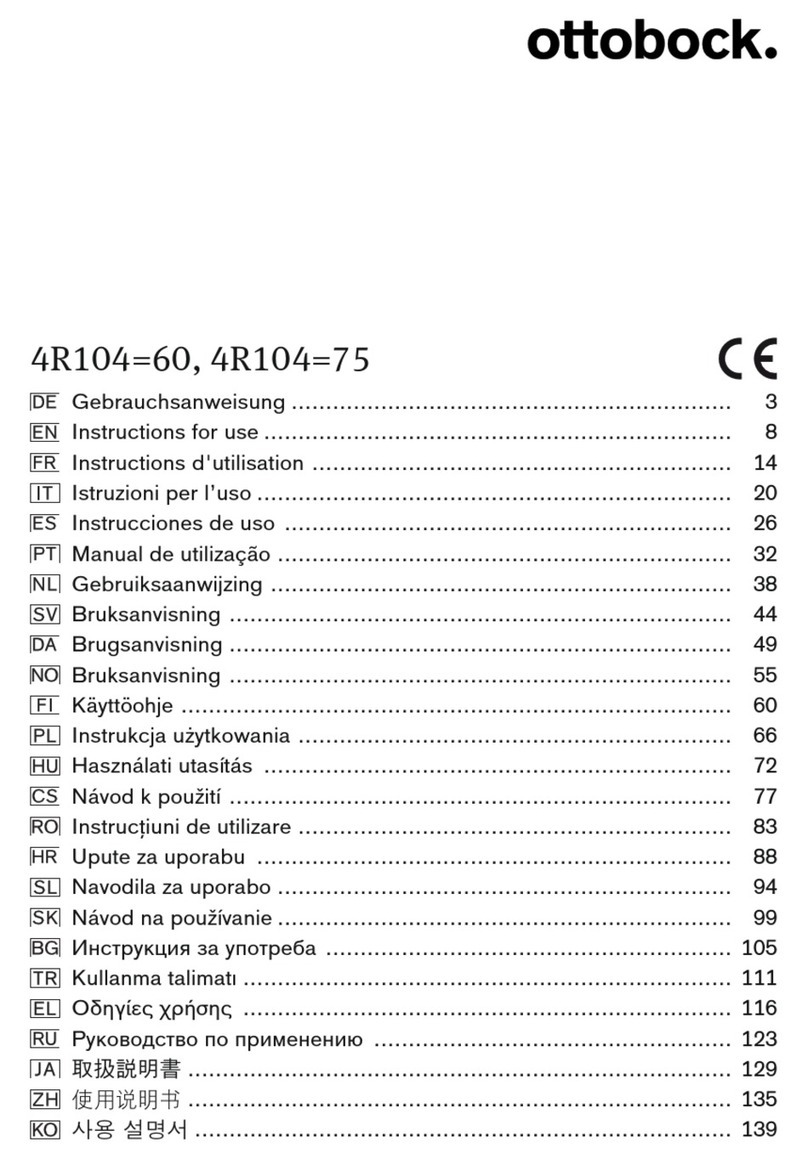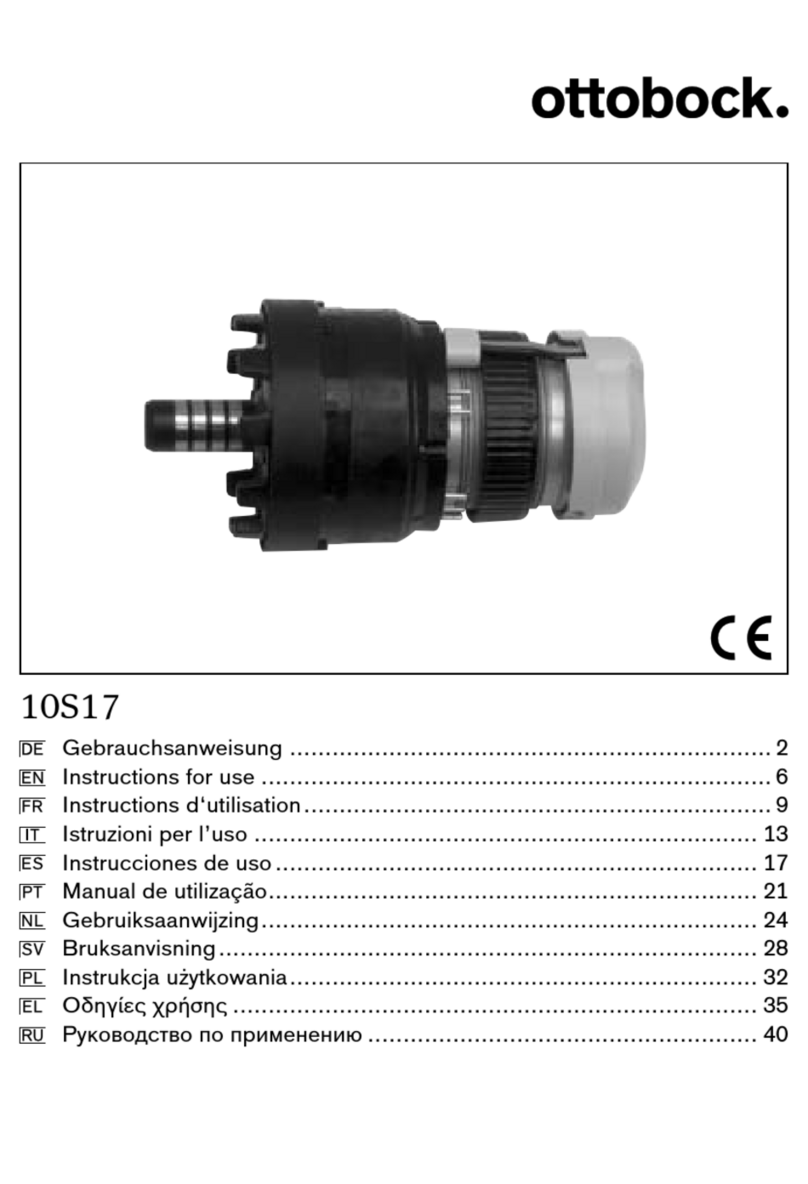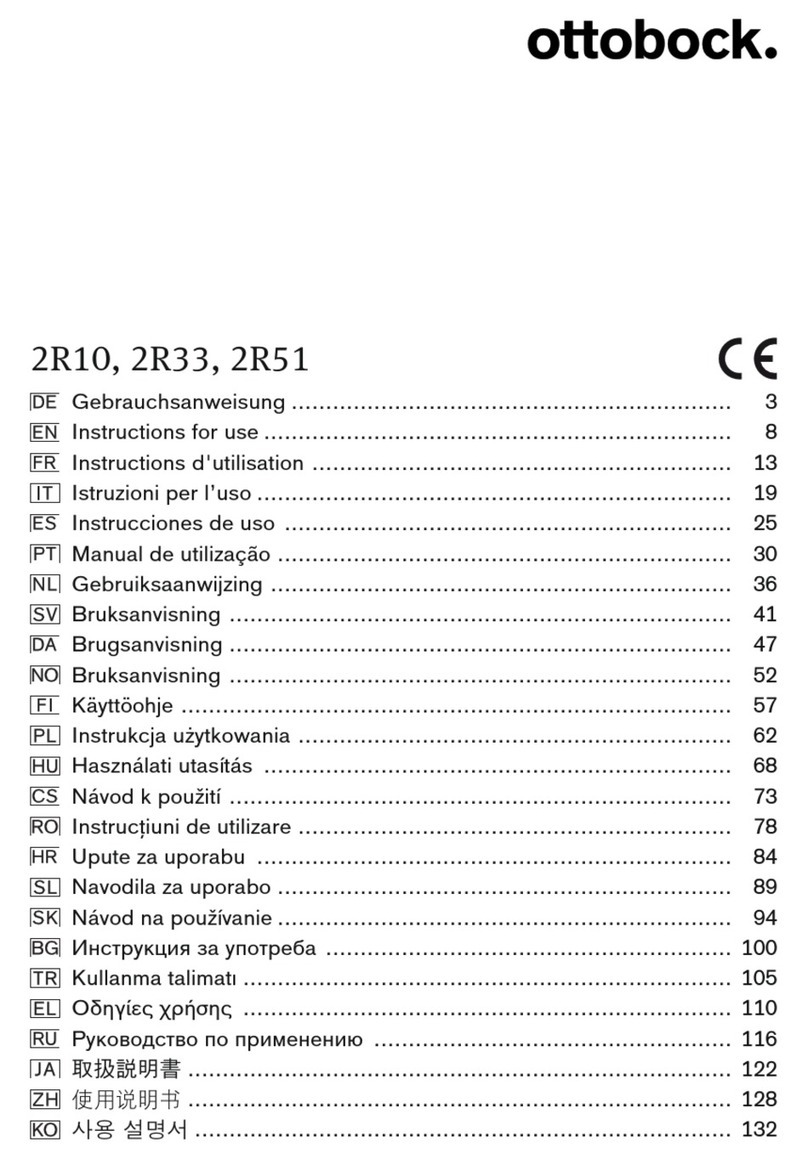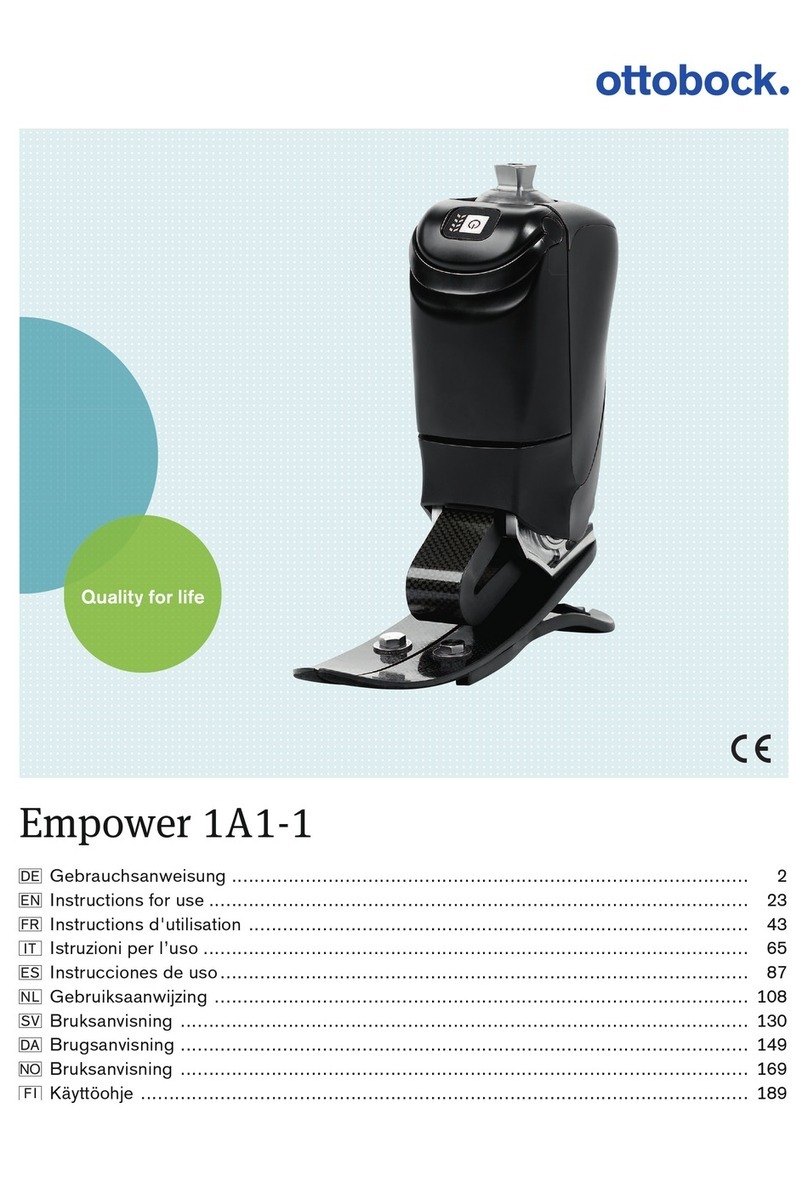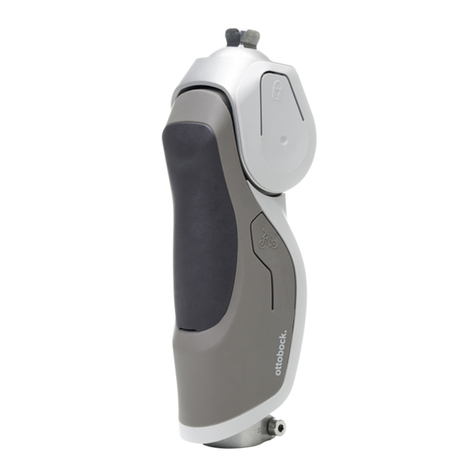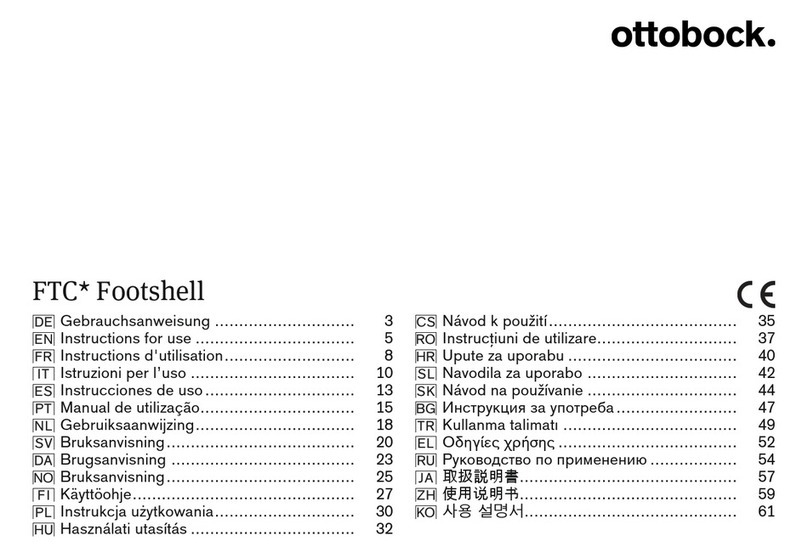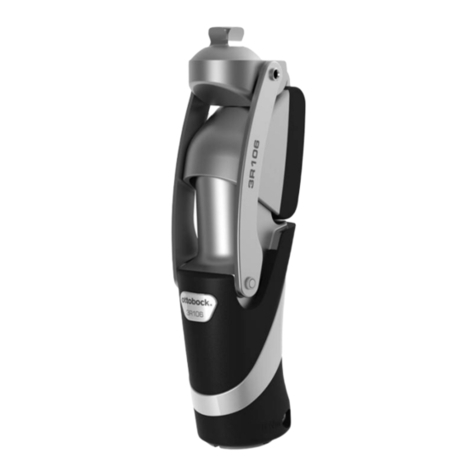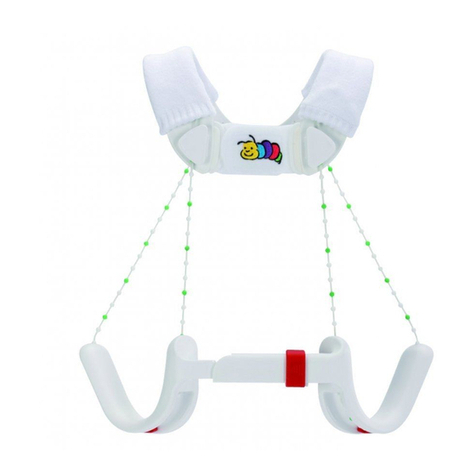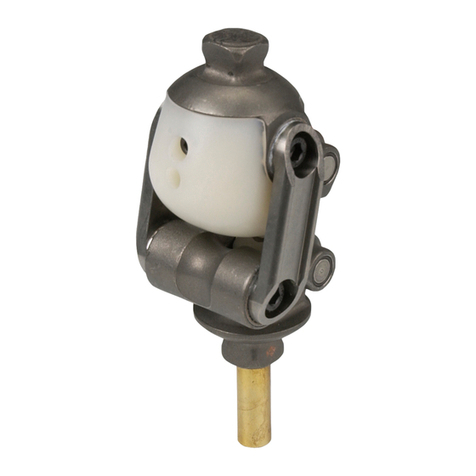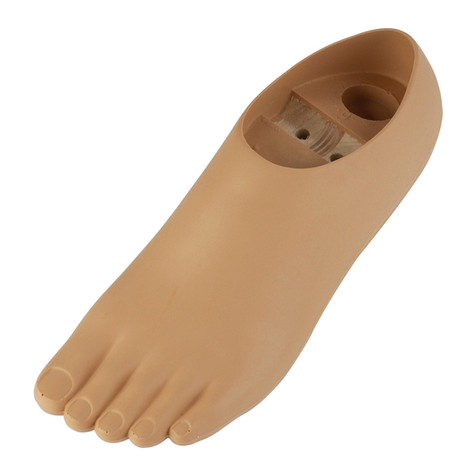
CAUTION
Risk of injury during fitting
We recommend fabricating a trial orthosis in order to verify the functionality and fit before the final orthosis is con
structed. Patient suitability can also be verified by following this process. Ensure that the patient is standing
securely during this process in order to eliminate the risk of falling. Carry out the fittings between parallel bars.
CAUTION
Risk of injury due to incorrect patient selection
In the selection of patients, ensure that the patient can fully extend the knee during heel lift-off and heel strike.
CAUTION
Incorrect alignment, assembly or adjustment
Risk of injury due to change in or loss of functionality
►Assembly, adjustment and maintenance operations may only be completed by qualified personnel.
►Observe the alignment, assembly and adjustment instructions.
CAUTION
Exposure of the product to unsuitable environmental conditions
Patient injury, damage, brittleness or destruction due to improper handling
►Do not expose the product to condensing ambient humidity or liquids.
►Do not expose the product to abrasive substances (e.g. sand, dust).
►Do not expose the product to temperatures below -10°C (14°F) or above +60°C (140°F) (e.g. sauna,
excessive sunlight, drying on a radiator).
CAUTION
Improper handling
Risk of falling due to accidentally opening or engaging the lock
►Before placing weight on the orthosis, verify that the lock is in the desired position.
►Avoid accidentally opening or engaging the lock.
►Instruct the patient in the correct handling of the orthotic joints.
NOTICE
Thermal overloading of the orthosis joint
Damage to the bearing washers due to improper thermal treatment, loss of orthosis joint movement
►Do not carry out any heat treatment.
►Check the function of the orthosis joint.
►Replace damaged bearing washers.
CAUTION
Knee not fully extended at heel strike
Risk of injury due to unlocked orthosis joint
►Fully extend the knee prior to heel strike.
NOTICE
Risk of damage to electronic components due to installation errors or improper use
Incorrect handling of the electronics can cause malfunctions and/or damage to the electronics. Please observe
the following safety instructions:
►Please read the information regarding the operation of the electronics thoroughly and instruct the patient in
the use of the electronics (see the information on the functionality of electronic components).
►Only install electronic components in the thigh area.
►All electronic connections should be protected against oxidisation with silicone grease.
►Only use the M5x10 screws included in the scope of delivery.
►If electronic components are defective, always replace the entire component with a spare part.
917B203=* E-MAG Active
Safety

